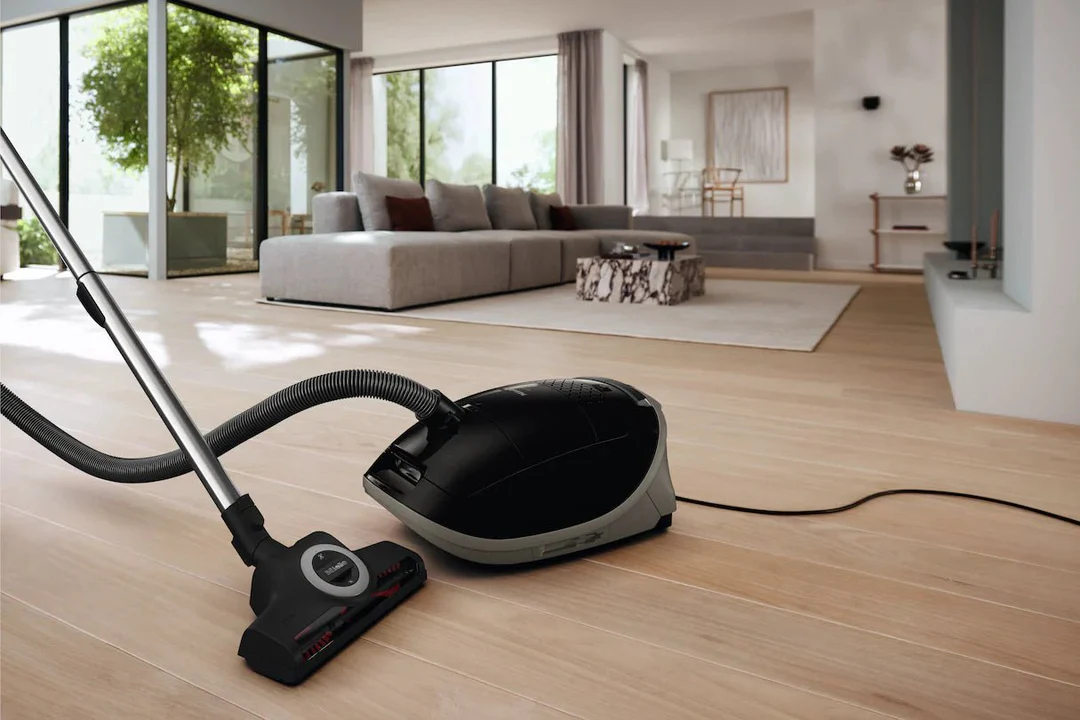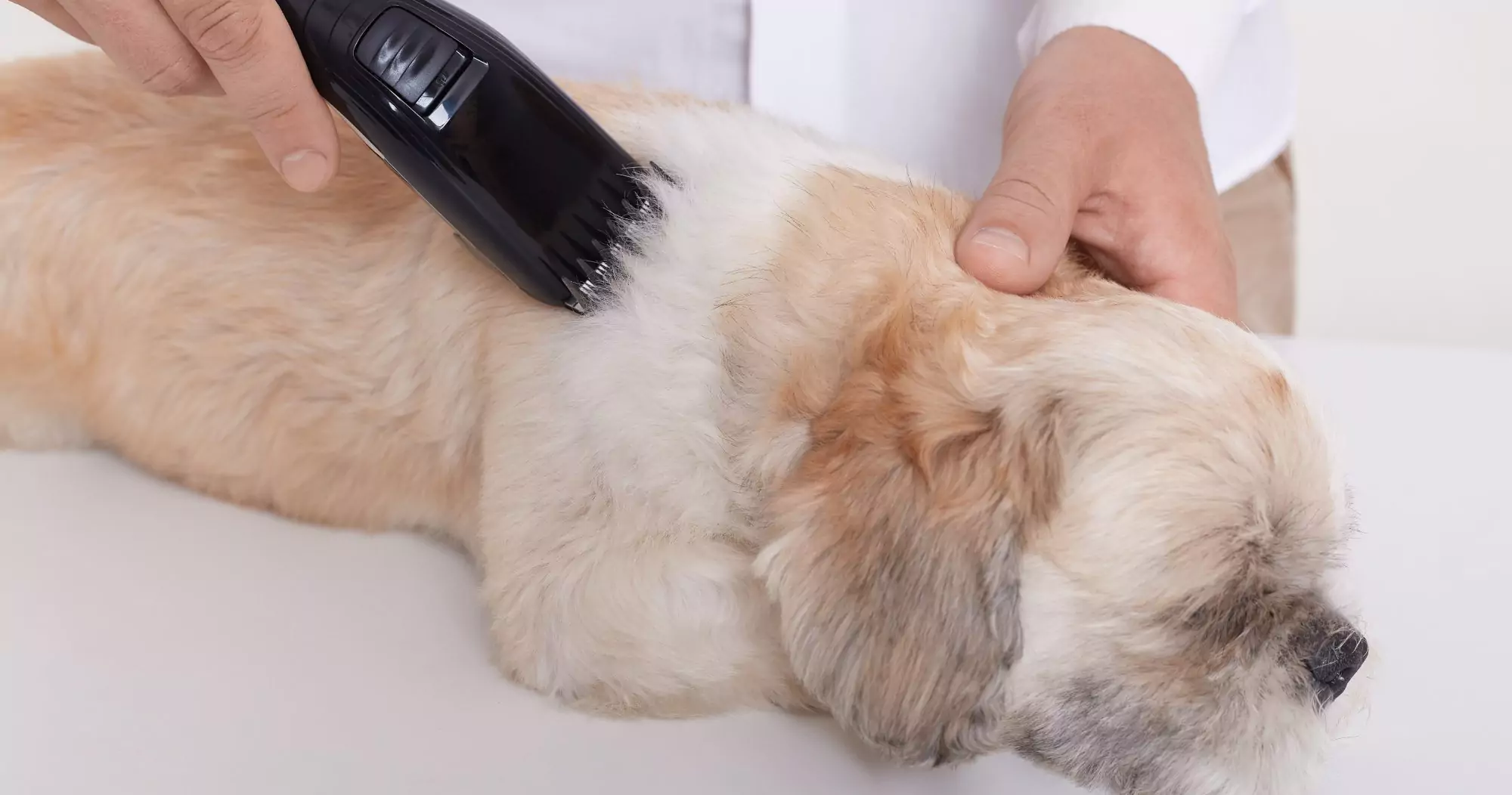Last updated on:
July 28, 2025
Camping trips create lasting memories. But they also leave lasting stains on your awning. Tree sap, bird droppings, mildew, and road grime accumulate over time. These stains make your camper look worn and can damage the awning material permanently if left untreated.
The right cleaner protects your investment and maintains your camper's appearance. It prevents costly awning replacement and ensures your outdoor living space remains inviting. Poor cleaning choices can damage awning fabric, void warranties, or create more problems than they solve.
This guide helps you choose the best cleaner for your specific awning type and cleaning needs. We cover commercial products, homemade solutions, and maintenance practices that extend awning life.
Understanding Awning Materials
Vinyl Awnings
Vinyl awnings resist water and handle stronger cleaning solutions better than fabric options. They clean easier but can show scratches from rough scrubbing. Most RV awnings use vinyl material because it costs less and lasts longer in harsh weather.
Vinyl awnings handle bleach-based cleaners and stronger detergents. They resist mold and mildew better than fabric but can become brittle with age or harsh chemical exposure.
Fabric Awnings
Acrylic and nylon fabric awnings need gentler cleaning approaches. They breathe better and look more natural but require more careful maintenance. Fabric awnings fade faster and absorb stains deeper than vinyl options.
Fabric awnings cannot handle abrasive, oil-based or corrosive cleaners, including those with bleach. They need pH-neutral or mild alkaline cleaners to prevent fiber damage.
Determining Your Awning Type
Check your owner's manual or look for manufacturer labels on the awning. Vinyl feels smooth and slightly glossy. Fabric has a textile texture and may show weave patterns. When in doubt, test cleaners on a small, hidden area first.
Types of Awning Cleaners
Commercial Awning Cleaners
Commercial cleaners are specifically formulated to loosen and remove tough stains and dirt from RV awnings. They offer consistent results and tested safety for awning materials. Most come ready-to-use or as concentrates.
Commercial cleaners cost more than homemade solutions but provide reliable results. They often include protectants that help prevent future staining.
Homemade Cleaning Solutions
A mixture of ¼ cup dish detergent, ½ cup bleach, and a gallon of water provides a softer solution that won't damage the material's surface. This works well for vinyl awnings but should not be used on fabric.
A simple mixture of liquid dish soap and water works wonders on awnings. This gentle approach works for both vinyl and fabric awnings for regular maintenance cleaning.
Car wash soap is another good option as you can also use it to clean the body of your RV as well. This provides convenience and consistent results across your entire camper exterior.
Specialty Stain Removers
Mold and mildew removers target specific problems common in humid environments. Tree sap removers handle sticky residues that regular cleaners cannot remove. Bird dropping cleaners neutralize acidic waste that can etch awning surfaces.
Top Camper Awning Cleaner Recommendations
Best Overall: Star Brite RV Awning Cleaner
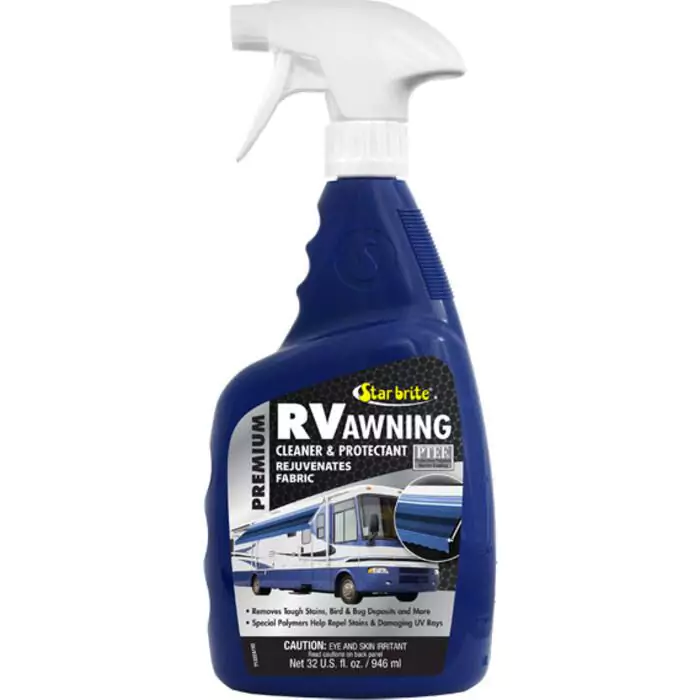
Star Brite Premium RV Awning Cleaner uses high-tech cleaning agents that work quickly and safely removes tough stains from fabric and vinyl awnings. This cleaner handles bird droppings, dirt, bug deposits, and leaf stains effectively.
Key Features:
- Works on both fabric and vinyl awnings
- Removes tough organic stains
- Does not discolor or stain awning material
- Ready-to-use spray formula
- Professional-grade results
Best For: RV owners who want reliable performance across different awning materials and stain types.
Price Range: $15-25 per 32-oz bottle
Best for Stubborn Stains: Thetford Premium RV Awning Cleaner

Thetford Premium RV Awning Cleaner quickly and safely removes tough leaf stains from fabric and vinyl awnings. Also effective on bird droppings, bugs and more. It features a UV blocker for maximum protection, and its non-bleaching formula won't discolor or stain fabrics and surfaces.
Key Features:
- Removes tough stains, bugs, and bird droppings
- Safe for both fabric and vinyl awnings
- UV blocker for additional protection
- Non-bleaching, non-toxic formula
- Available in multiple sizes (32-oz, 64-oz, 1-gallon)
Best For: Awnings with heavy staining, organic debris, or those needing UV protection.
Price Range: $15-30 depending on size
Best Value: Awning Brite Vinyl Cleaner
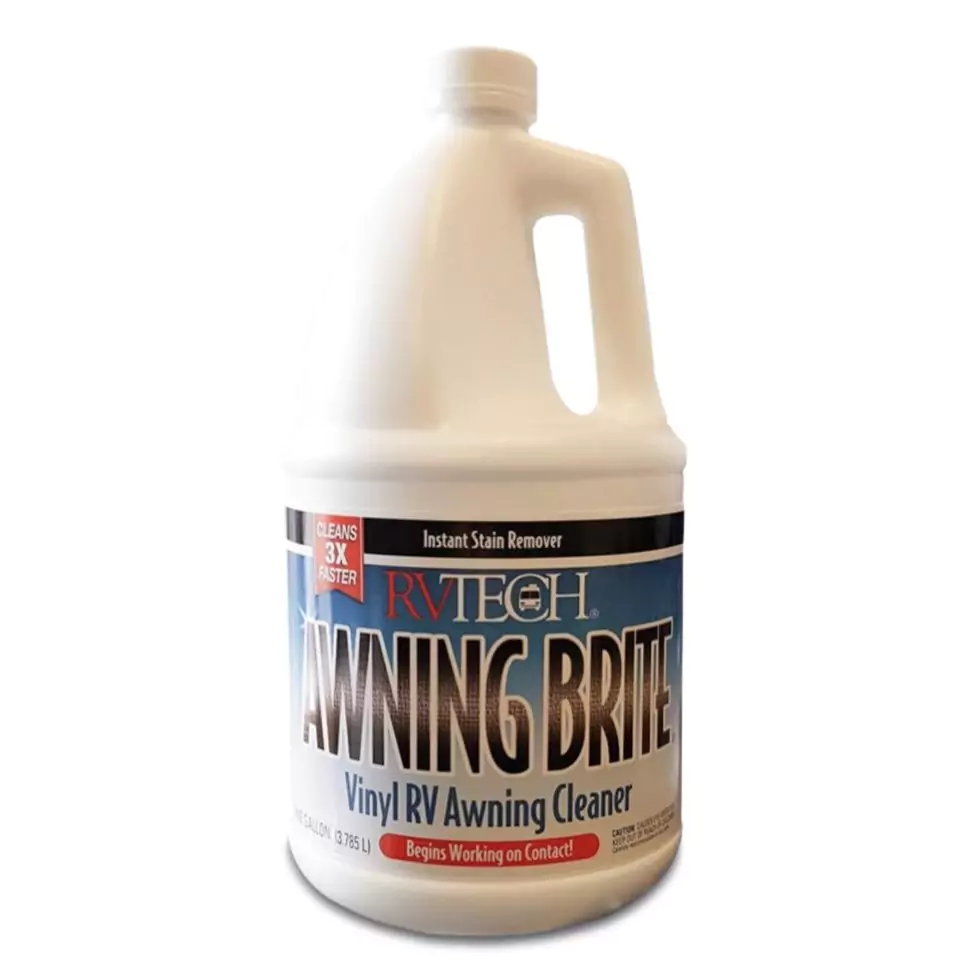
Awning Brite combines high-performance ingredients that safely penetrate, dissolve and neutralize black streaks and tough stains. This cleaner offers professional results at a reasonable price point.
Key Features:
- Instant stain neutralization
- Works on vinyl awnings and slide toppers
- Professional-strength formula
- Spray and wipe application
- Includes safety equipment
Best For: Vinyl awning owners seeking professional results without premium pricing.
Price Range: $25-40 per gallon
Best Budget Option: Homemade Dish Soap Solution
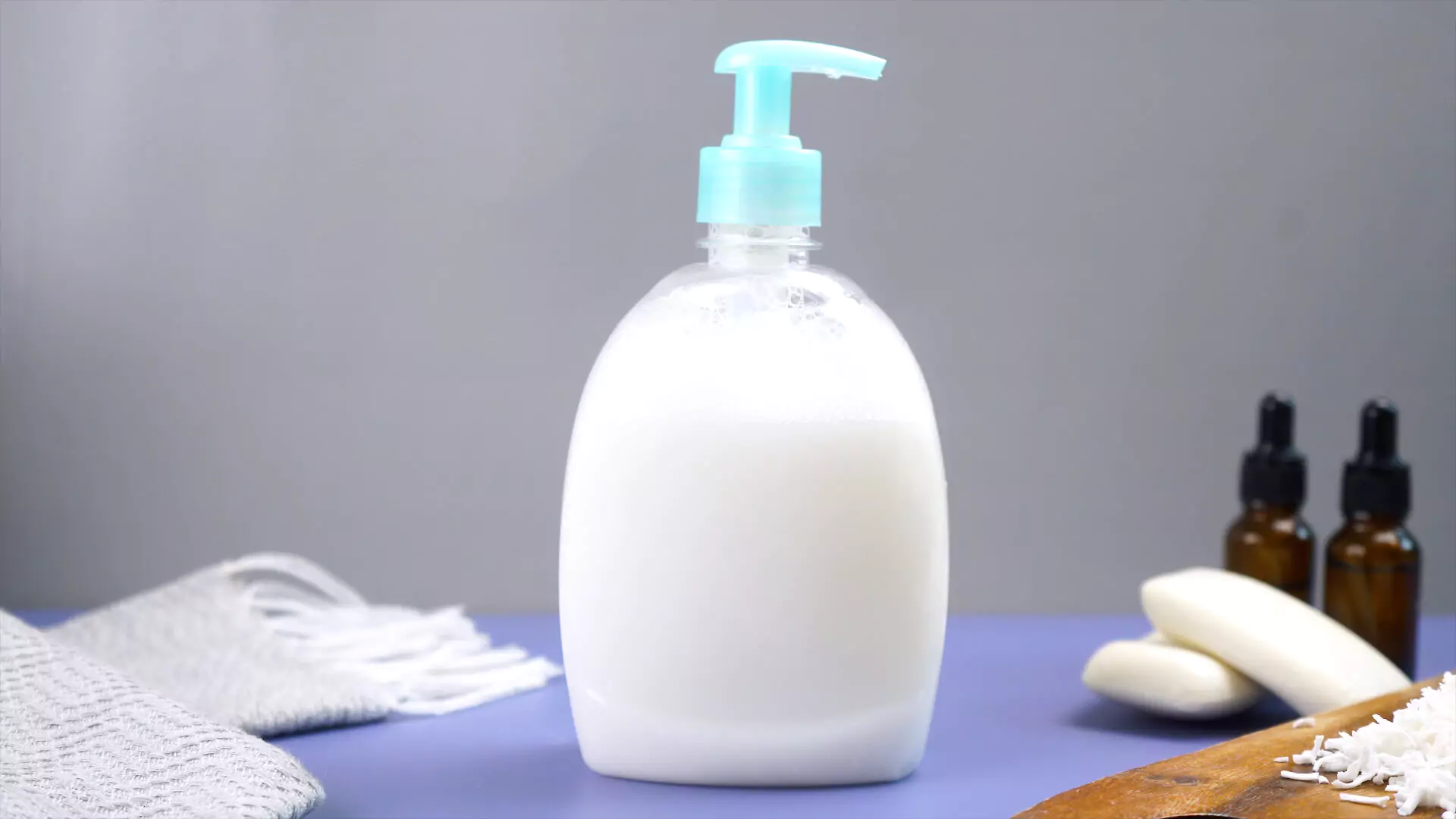
Dish soap is an excellent option, especially for greasier stains. This approach costs pennies per gallon and works well for regular maintenance cleaning.
Key Features:
- Extremely cost-effective
- Safe for all awning materials
- Recipes available online for free
- Gentle daily cleaning
- No harsh chemicals
Best For: Budget-conscious campers who perform regular awning maintenance and deal with light soiling.
Price Range: Under $2 per gallon of cleaning solution ingredients
Best for Fabric Awnings: Bio-Kleen Awning Cleaner
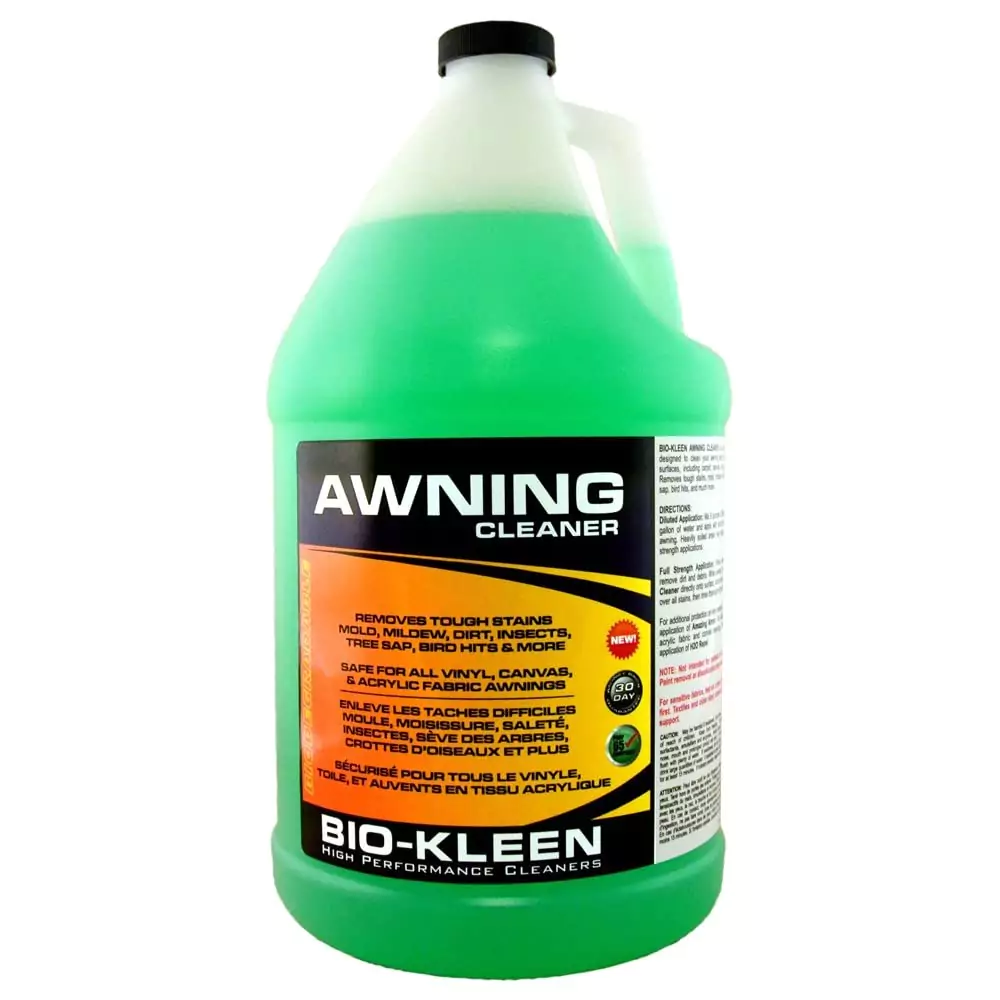
Bio-Kleen offers specialized awning cleaner for most awning types with a 30-day money back guarantee. This cleaner provides gentle but effective cleaning for delicate fabric materials.
Key Features:
- Designed for multiple awning types
- Gentle on fabric materials
- Environmentally conscious formula
- Money-back guarantee
- Technical support available
Best For: Fabric awning owners who want specialized care without risking material damage.
Price Range: $20-35 per bottle
Essential Cleaning Supplies
Brushes and Scrubbing Tools
A bristle brush with sufficient reach is crucial for effectively scrubbing away dirt and stains. The brush should have soft bristles to prevent scratches or damage to the awning fabric. Extension poles help reach high areas safely.
Avoid steel wool, abrasive pads, or stiff brushes that can damage awning surfaces. Natural bristle or soft synthetic brushes work best for most cleaning tasks.
Protective Equipment
Safety goggles protect eyes from cleaning spray drift. Rubber gloves prevent skin irritation from cleaners. Old clothes or coveralls protect your clothing from cleaner splashes and awning dirt.
Application Tools
Spray bottles provide even cleaner distribution and reduce waste. Garden sprayers work well for large awnings or diluted cleaner solutions. Microfiber cloths help with final cleaning and drying steps.
Cleaning Process and Techniques
Preparation Steps
Extend your awning fully and secure it properly. Remove loose debris with a soft brush or vacuum. Test cleaners on a small, hidden area first. Protect surrounding surfaces from cleaner overspray.
Set up your cleaning area with good drainage away from plants or sensitive surfaces. Have rinse water ready before applying cleaners.
Application Methods
To spot clean, spray directly onto stain and allow to penetrate for 30 seconds. To clean large areas, spray evenly over entire section and allow to penetrate. Work in sections to prevent cleaners from drying on the surface.
Apply cleaners from bottom to top to prevent streaking. Use gentle circular motions when scrubbing. Rinse thoroughly with clean water to remove all cleaner residue.
Drying and Storage
Allow awnings to dry completely before retracting. Moisture trapped in stored awnings creates mold and mildew problems. Check for remaining stains before storage and repeat cleaning if needed.
Store awnings loosely rolled when possible. Tight rolling while damp can create permanent creases and encourage mold growth.
Maintenance and Prevention
Regular Cleaning Schedule
Clean awnings monthly during heavy use seasons. Spot clean stains immediately to prevent permanent setting. Inspect awnings weekly for damage or developing problems.
Regular cleaning prevents the need for stronger cleaners and aggressive scrubbing. Maintenance cleaning takes less time and protects awning materials better than deep cleaning.
Stain Prevention
Apply awning protectants after cleaning to repel future stains. Park away from trees when possible to reduce sap and leaf stains. Retract awnings during storms to prevent damage and heavy soiling.
Position awnings to minimize bird perching areas. Clean spills and stains immediately rather than letting them set.
Seasonal Care
Inspect awnings thoroughly at the start and end of camping seasons. Deep clean before long-term storage. Check hardware and mounting points during cleaning sessions.
Apply fresh protectant treatments annually. Replace worn or damaged awning sections before they affect surrounding material.
Safety Considerations
Chemical Handling
Read and follow all cleaner label instructions. Use cleaners in well-ventilated areas. Never mix different cleaning products. Store cleaners away from heat sources and children.
Wear protective equipment when using strong cleaners. Have rinse water available in case of skin or eye contact.
Working at Height
Use stable ladders or platforms when cleaning high awning areas. Have someone spot you when working above ground level. Consider professional cleaning for awnings you cannot reach safely.
Extension poles reduce the need for ladder work. But they require more cleaning solution and may not provide the scrubbing power needed for tough stains.
Environmental Protection
Dispose of used cleaning solutions properly. Avoid letting cleaner runoff enter storm drains or natural water sources. Use biodegradable cleaners when camping in sensitive areas.
Consider the impact of your cleaning choices on the environment where you camp. Some parks restrict certain cleaning products.
Troubleshooting Common Problems
Persistent Stains
Try enzyme-based cleaners for organic stains like food or waste. Use solvent-based cleaners for oil or grease stains. Apply cleaners multiple times for old, set stains.
Heat can help stubborn stains. Warm cleaning solutions work better than cold ones. But avoid hot water on vinyl awnings as it can cause shrinkage.
Mold and Mildew
Some RV owners suggest stronger solutions for tough mold spots on vinyl awnings. But test these on hidden areas first. Prevention works better than treatment for mold problems.
Improve ventilation around stored awnings. Use mold prevention products in storage areas. Address leaks or moisture sources that contribute to mold growth.
Fading and Discoloration
UV damage causes most awning fading. This cannot be reversed with cleaning. Prevention through proper storage and UV protectants works best.
Some cleaners can cause discoloration if left on too long or used too strong. Always test cleaners first and follow dilution instructions exactly.
Making Your Decision
When choosing an awning cleaner, consider your awning material, typical staining problems, and cleaning frequency. Star Brite RV Awning Cleaner offers the best balance of effectiveness and safety for most camper owners. Thetford Premium RV Awning Cleaner provides superior performance for heavily stained awnings with added UV protection.
Budget-conscious campers will find excellent results with homemade dish soap solutions for regular maintenance. Fabric awning owners should invest in specialized cleaners like Bio-Kleen to protect their investment.
Remember that regular maintenance prevents major cleaning problems and extends awning life. Choose cleaners that match your commitment to maintenance and your awning's specific needs. The right cleaner combined with proper technique will keep your awning looking great for years.
Consider your camping style, storage conditions, and local environmental factors when making your final decision. A quality cleaner used properly will maintain your awning's appearance and function. This protects your investment and enhances your camping experience.
![image of a customer service representative (focusing on workspace) [background image]](https://cdn.prod.website-files.com/686ff0f42c677102ebc56fac/68880d187cf1de95c401ee29_rv-awning-repair-services-og-img-adbe-68880d10dc6a9.webp)






